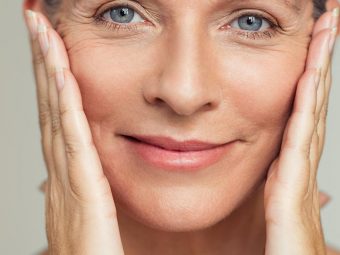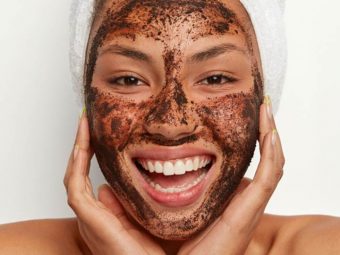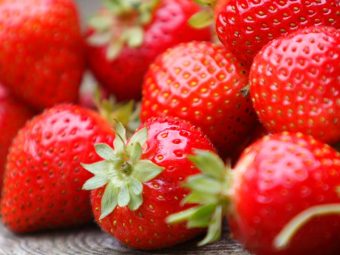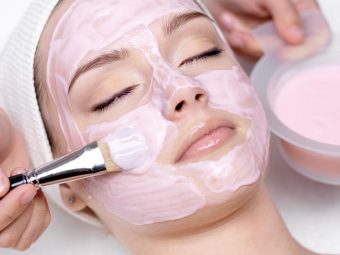5 Benefits Of Using Milk And Honey For Face
From moisturization to maintaining ski pH- these two ingredients can do a lot for your skin.
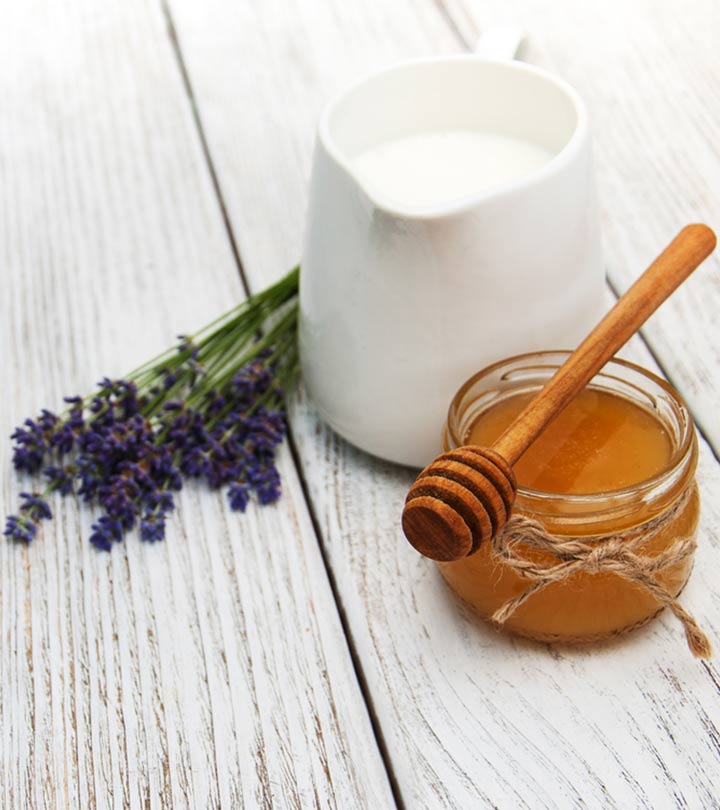
If you are looking for the ultimate home remedy to keep your skin hydrated and glowing, we have a solution. Try milk and honey. The DIY milk and honey mask benefit your skin in numerous ways.
Scroll through this article to understand how they may help and learn ways to use milk and honey to keep your skin happy.
In This Article
Milk And Honey For Face: What Are The Benefits?
Milk and honey can have age-defying effects on your skin. According to the legend, Cleopatra used to bathe in milk every day to keep her skin young, radiant, and clear. This combination can have certain benefits as stated below:
1. Help Moisturize Your Skin
Lactic acid is one of the natural AHA (alpha-hydroxy acids) found in sour milk that acts as an excellent moisturizer. It is a part of the natural moisturizing complex of your skin (1). Honey is an emollient and a humectant that can bind moisture to your skin and keep it soft and moisturized (2). For these very reasons, some skin care products use milk and honey in their formulas.
2. Milk Keeps The Skin Firm And Smooth
A study found that 12% of topical lactic acid can help improve skin appearance by reducing fine lines and wrinkles. It also helps keep the skin skin firm and smooth (3). Milk has a mild exfoliating effect. Applying it to your face can have similar results.
3. Honey Helps Maintain Skin pH
Maintaining skin pH is crucial to prevent breakouts and rashes. An imbalance in skin pH disturbs the natural barrier of your skin. This can lead to skin irritation. Honey helps regulate skin pH levels (2).
4. Honey Can Heal Wounds
Honey’s antimicrobial properties and methylglyoxal (one of the active compounds) can help heal your wounds effectively. It is also suitable for healing burn wounds and other skin issues such as psoriasis, dandruff, diaper rash, seborrhea, and tinea (2).
5. Honey Treats Acne
A study found that applying honey to acne lesions can promote faster healing. Honey can also inhibit the growth of both P. acnes and S. aureus bacteria (4).
Both milk and honey have a lot to offer to your skin. In the next section, we will explore the different ways you can use this combination on your face.
How To Use Milk And Honey On Face
1. Milk And Honey As A Face Wash
Both honey and milk can moisturize the skin and inhibit acne-causing bacteria. This way, they can help keep your facial skin healthy and clear.
You Will Need
- 1 tablespoon of raw honey (you may use Manuka honey)
- 2 tablespoons of milk
- 1 bowl
- 1 cotton pad
Method
- Mix the two ingredients in the bowl till you achieve a cream-like consistency.
- Dip the cotton pad into the mixture and apply it to your face in circular motions.
- Let the mixture sit on your face for 10 minutes.
- Wash your face with cool water and massage gently.
- You may follow up with a gentle cleanser if desired.
- Pat your skin dry and follow up with a toner and a moisturizer.
2. Milk And Honey As A Face Mask
This face mask helps soothe your skin. Both the ingredients have moisturizing properties, making this face mask especially beneficial for dry skin. However, the mask is suitable for all skin types.
You Will Need
- 1 tablespoon of raw Honey
- 1 tablespoon of milk
- 1 microwave-safe bowl
Method
- Mix the honey and milk in the bowl until you have a thick consistency.
- Put the bowl into the microwave and heat for a few seconds. Ensure the mixture is warm to the touch and not too hot.
- Use a brush (or your fingers) to spread the mask on your skin.
- Let the mask stay for at least 15 minutes.
- Wash your face with cool water. You may use a gentle cleanser as well.
- Follow up with a toner and a moisturizer.
3. Milk And Honey As A Scrub
Oats, Fuller’s earth and ground almonds have a coarse texture. These work excellently well in exfoliating your skin without causing damage. The milk and honey in the scrub keep your skin hydrated.
You Will Need
- 1 teaspoon of raw honey
- 1 teaspoon of milk
- 1 tablespoon of ground oats/Fuller’s earth/ground almonds
- 1 bowl
Note: If you have sensitive skin, use oats. If you have oily skin, use Fuller’s earth. If you have normal skin, you may use any of the three options.
Method
- Mix the milk and honey in the bowl.
- Add ground oats or Fuller’s earth or ground almonds.
- Adjust the quantity of milk (especially if you are using Fuller’s earth) to get a desired paste-like consistency.
- Apply the mixture to your face and gently massage, avoiding the area around your eyes.
- After massaging for 5 minutes, wash with cool water.
- Pat your skin dry and follow up with a toner and a moisturizer.
A milk and honey mask benefits the skin in multiple ways. It hydrates the skin and imparts a natural glow to it. This pack also moisturizes the skin, keeps it smooth and firm, maintains its pH, alleviates wound healing, and helps treat acne. Milk and honey can be used as a face wash, a face mask, and a scrub. Including these nourishing ingredients in your skin care regimen twice or thrice a week helps improve your skin health. Applying this mask after cleansing your face offers the best results.
Frequently Asked Questions
Is it good to drink milk with honey?
Drinking milk with honey may potentially have some benefits, though there is no scientific evidence that proves this. The best way to use it is to let the milk cool down and then add honey to it. Ayurveda doesn’t recommend consuming warm honey (mixed in any warm beverage or food) as it is considered to harm health. However, studies in this regard are inconclusive.
How long should I leave milk on my face?
You may leave milk on your face for 5-10 minutes.
Can milk and honey be applied to the whole body?
Yes, you can apply the combination to your whole body. You may prepare a bathtub-soak with honey and milk. Soak in it for 15-20 minutes.
Sources
- Dual Effects of Alpha-Hydroxy Acids on the Skin, Molecules, US National Library of Medicine, National Institutes of Health.
https://www.ncbi.nlm.nih.gov/pmc/articles/PMC6017965/ - Honey in dermatology and skin care: a review, Journal of Cosmetic Dermatology, US National Library of Medicine, National Institutes of Health.
https://www.ncbi.nlm.nih.gov/pubmed/24305429 - Epidermal and dermal effects of topical lactic acid, Journal of the American Academy of Dermatology, US National Library of Medicine, National Institutes of Health.
https://pubmed.ncbi.nlm.nih.gov/8784274 - Honey: A Therapeutic Agent for Disorders of the Skin, Central Asian Journal of Global Health, US National Library of Medicine, National Institutes of Health.
https://www.ncbi.nlm.nih.gov/pmc/articles/PMC5661189/




